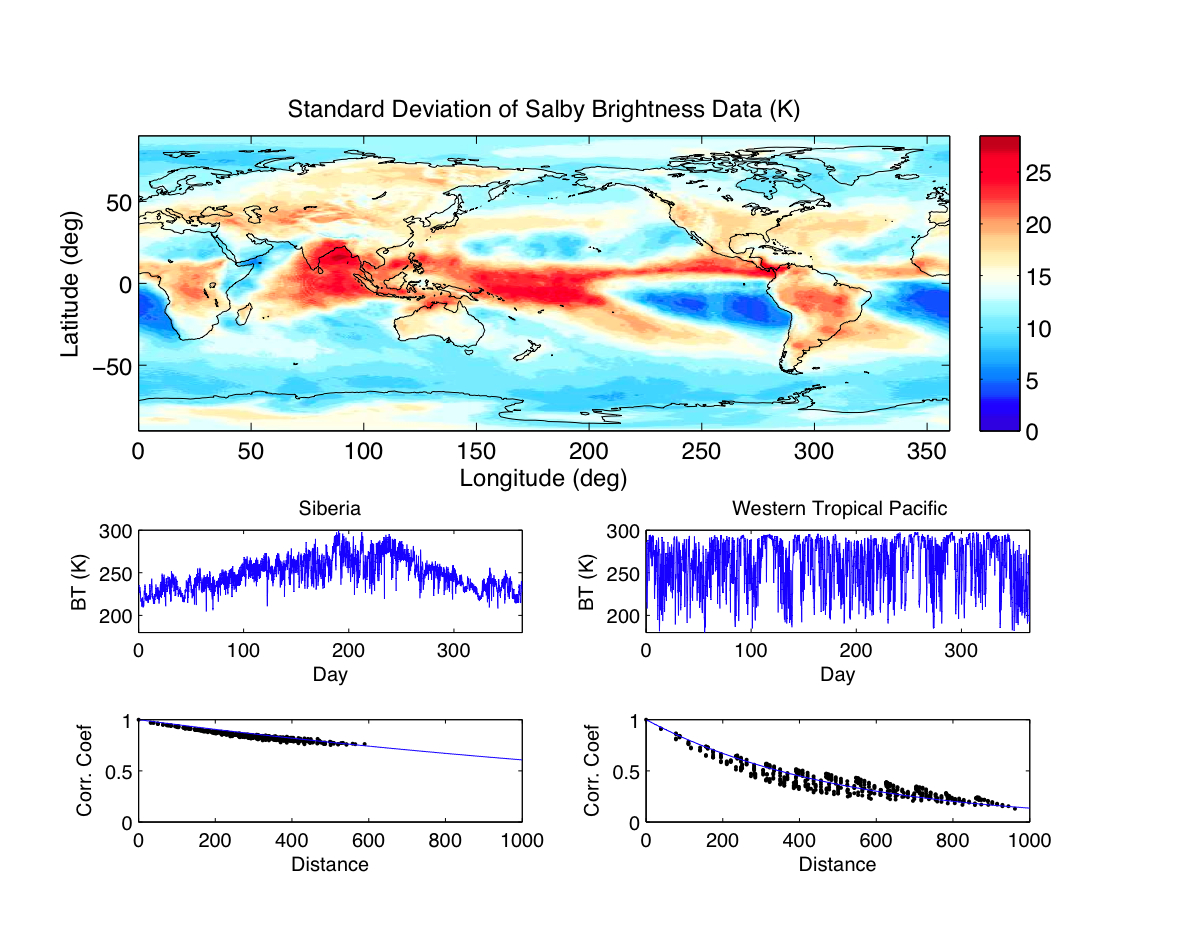
The Sampling Problem for High Accuracy Climate Monitoring from Space
 The proposed NASA CLARREO (Climate Absolute
Radiance and Refractivity Observatory) mission would involve a set of
orbiting observatories designed from start to finish for high absolute
accuracy, traceable to international standards. They will observe
spectrally resolved infrared and visible radiance, and radio-frequency
refractivity by GPS occulatation. My contribution to this project
involves studies of the sampling error characteristics of data from a
range of candidate satellite orbital configurations. To achieve very
high accuracies in climate means (e.g. less than 0.1 K in infrared
brightness temperature), both random errors and sampling bias must be
considered. This means large numbers of observations (by averaging
over relatively large geographic regions and temporal ranges), and
also careful attention to the interactions of satellite orbital
frequency, ground track repeat cycles, and seasonal, semi-seasonal,
diurnal and semi-diurnal variability.
The proposed NASA CLARREO (Climate Absolute
Radiance and Refractivity Observatory) mission would involve a set of
orbiting observatories designed from start to finish for high absolute
accuracy, traceable to international standards. They will observe
spectrally resolved infrared and visible radiance, and radio-frequency
refractivity by GPS occulatation. My contribution to this project
involves studies of the sampling error characteristics of data from a
range of candidate satellite orbital configurations. To achieve very
high accuracies in climate means (e.g. less than 0.1 K in infrared
brightness temperature), both random errors and sampling bias must be
considered. This means large numbers of observations (by averaging
over relatively large geographic regions and temporal ranges), and
also careful attention to the interactions of satellite orbital
frequency, ground track repeat cycles, and seasonal, semi-seasonal,
diurnal and semi-diurnal variability.
This figure shows the variation of the correlation of grid point brightness temperature as a function of distance separating the points. If the correlation decays rapidly with distance, then increasing sampling frequency will effectively reduce sampling noise.
References
Kirk-Davidoff, D.B., R.M. Goody, and J.G. Anderson, 2005: Analysis of sampling errors for climate monitoring satellites. J. Climate. 18:810-822. PDF.
Anderson, J.G., J.A. Dykema, R.M. Goody, H. Hu, D.B. Kirk-Davidoff, 2004: Absolute Spectrally Resolved Radiance: A Benchmark for Climate Monitoring from Space. J.Q.R.S.T. 85:367-383. PDF.